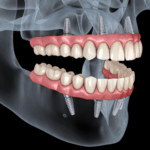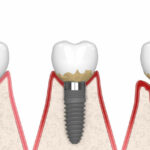Dentistry is evolving faster than ever before, thanks in large part to innovations in digital technology. Among the most transformative advancements is the use of 3D and even 4D printing. These technologies are changing how dental care is delivered, from diagnosis and treatment planning to the creation of precise restorations.
In this blog, we’ll explore the applications, benefits, and future of 3D and 4D printing in dentistry, and why it matters for patients seeking high-quality care.
What Is 3D Printing in Dentistry?
3D printing, also known as additive manufacturing, involves creating a physical object from a digital model by layering material. In dentistry, 3D printers are used to fabricate a variety of dental items, such as:
- Crowns
- Bridges
- Orthodontic aligners
- Surgical guides
- Dentures
- Implant models
- Temporary restorations
Using a digital impression (from intraoral scanners), dental professionals can design precise restorations and print them in-house or via a dental lab. This speeds up treatment time and increases precision.
Introduction to 4D Printing
4D printing builds on 3D printing by incorporating materials that can change shape or function over time in response to stimuli like temperature, moisture, or light. While 4D printing is still in its early stages in dentistry, its potential is groundbreaking.
Potential future applications include:
- Orthodontic devices that adjust shape over time without manual adjustments
- Restorative materials that adapt to changing mouth environments
- Smart implants that respond to biological cues
Benefits of 3D and 4D Printing in Dentistry
These technologies offer a range of advantages that improve both clinical outcomes and patient satisfaction:
- Speed: Rapid production of dental prosthetics and tools
- Precision: Highly accurate fit due to digital design
- Customization: Tailored restorations for each patient’s anatomy
- Cost-Effectiveness: Reduced lab fees and chair time
- Predictability: Improved treatment planning and visualization
- Minimally Invasive: Guides and surgical templates increase accuracy and reduce complications
How Patients Benefit from These Advancements
For patients, 3D and 4D printing mean:
- Fewer appointments
- Quicker turnaround on restorations
- Better-fitting crowns, bridges, and aligners
- Enhanced aesthetic results
- Less discomfort during procedures
Because restorations can be printed on-site, patients can often receive same-day crowns or aligners without waiting weeks for lab work.
How Park Avenue Dental Group Utilizes These Technologies
While 4D printing is still emerging, Park Avenue Dental Group is already leveraging 3D printing to enhance patient care. From precise surgical guides for implants to customized clear aligners, we use digital workflows to ensure optimal results and patient comfort.
We continually invest in the latest technology to reduce treatment time, increase precision, and improve your dental experience.
The Future of 3D and 4D Printing in Dentistry
As material science continues to advance, 3D and 4D printing will become even more integral to dentistry. Some exciting developments on the horizon include:
- Bio-printing of tissue for regenerative procedures
- Smart restorations that deliver medication
- Fully automated chairside printing of permanent crowns
Dental practices that adopt these technologies early will lead the way in delivering faster, safer, and more personalized care.
Conclusion
The integration of 3D and 4D printing into dental care isn’t just a trend—it’s the future. Patients benefit from greater accuracy, faster service, and more comfort during procedures. As these technologies become more accessible, more patients will enjoy their life-changing benefits.
At Park Avenue Dental Group, we are proud to be on the cutting edge of digital dentistry. If you’re interested in how our technology-enhanced treatments can improve your smile, schedule a consultation today. Let’s build the future of your oral health—one layer at a time.







